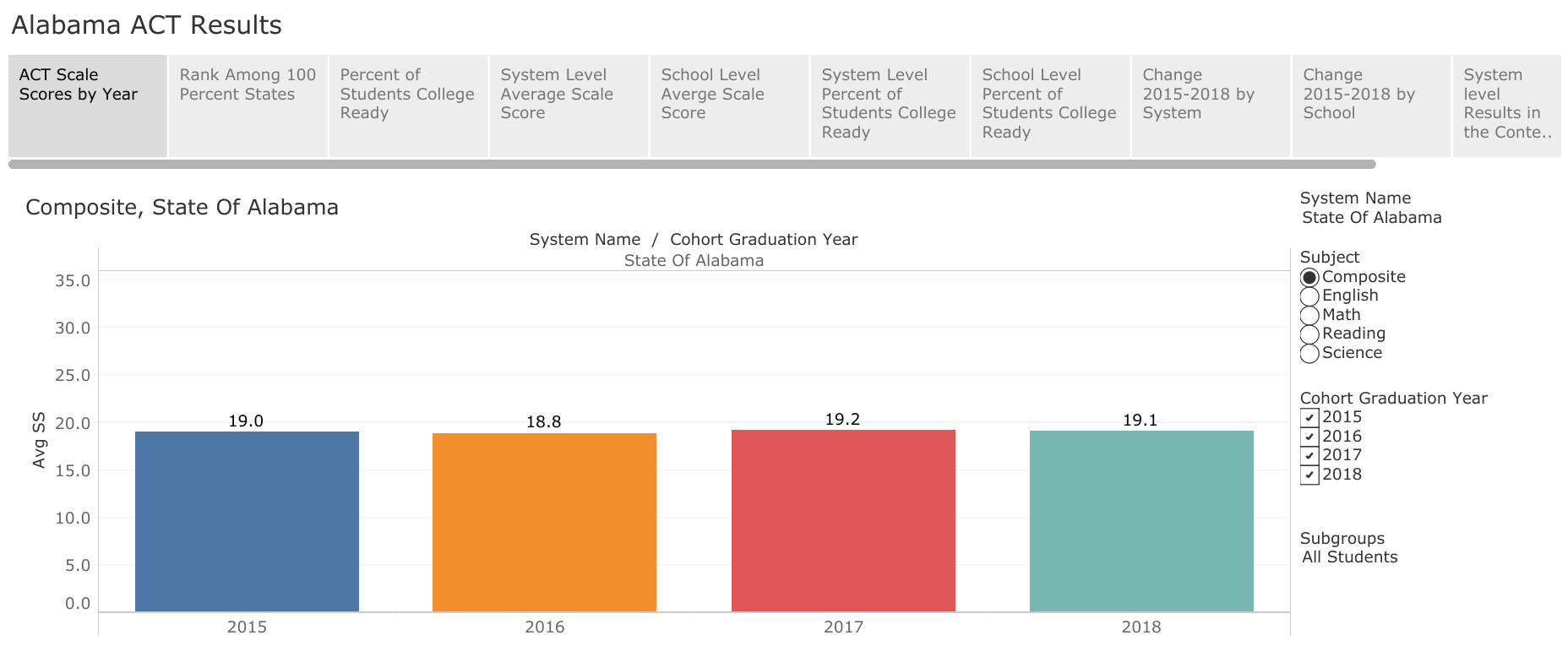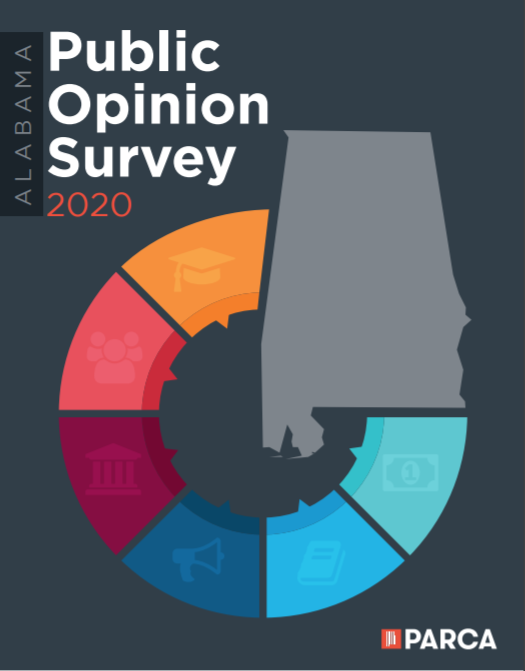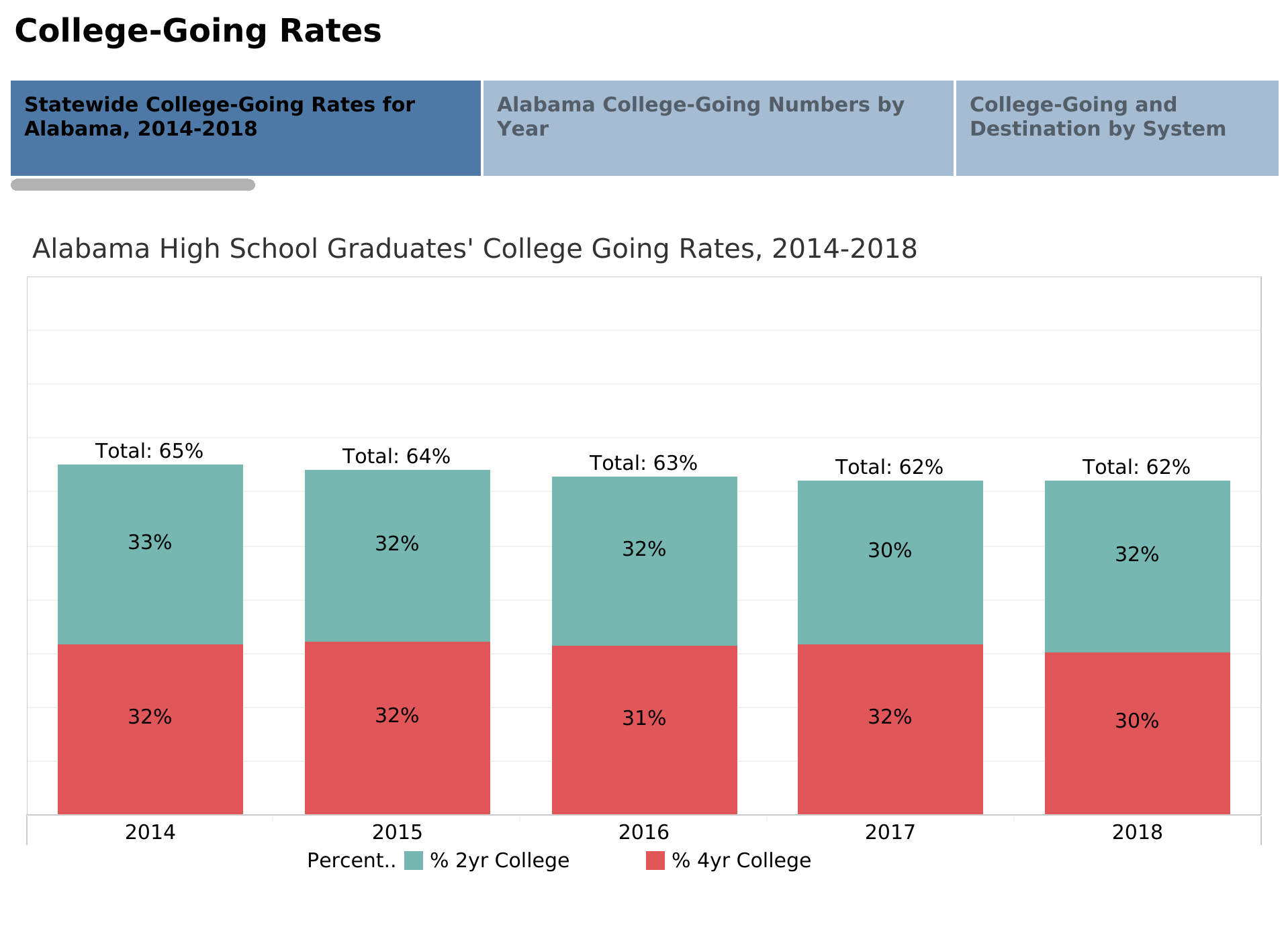
Alabama’s seven congressional representatives issued recommendations on re-opening Alabama’s economy to Governor Ivey last week. Governor Ivey plans to announce her decision on April 28.
Guidelines for Opening Up America Again
Several of the reports reference the Guidelines for Opening Up America Again published by the White House and the Centers for Disease Control on April 16. A summary of those recommendations is useful before considering the reports from Alabama’s congressional delegation.
The Guidelines suggest a three-phased strategy for re-opening. Phase One is most relevant now. Five metrics determine when a Phase One re-opening is safe:
- When flu-like illnesses decline for 14 days
- When COVID-like syndromic cases decline for 14 days
- When documented cases of COVID-19 or the percentage of positive tests decline for 14 days
- When hospitals are able to treat all patients without crisis care
- When robust testing, including anti-body testing, is in place for at-risk healthcare workers
Presuming the above conditions are met, the Guidelines make the following recommendations for a Phase One re-opening.
- Vulnerable individuals should shelter in place.
- All individuals should practice social distancing.
- All individuals should avoid groups larger than 10.
- Minimize non-essential travel.
- Employers should:
- encourage telework
- return to work in phases
- close common areas
- minimize non-essential travel
- consider special accommodations for vulnerable populations.
- Schools and youth organizations should remain closed.
- Visits to senior living facilities and hospitals should be prohibited.
- Restaurants, theaters, sporting venues, gyms, and houses of worship can operate under strict social distancing guidelines.
- Bars should remain closed.
- Elective medical procedures can resume.
Congressional Recommendations
Below is a high-level summary of the reports. By necessity, the reports are summarized. Not all recommendations of every report are included. Unique contributions are summarized or quoted. Likewise, inclusion below does not reflect PARCA’s endorsement and should not be seen as an affirmation of the efficacy, practicality, or legality of the recommendation.
Disclosures: PARCA Board Secretary Tyrone Fenderson served on the Advisory Committee for Rep. Bradley Byrne. PARCA Board Member Ted Hosp served on the Advisory Committee for Rep. Terri Sewell. PARCA staff designed and conducted a stakeholder survey for Rep. Sewell’s report. PARCA Executive Director Ryan Hankins is listed in Rep. Sewell’s Advisory Committee because of PARCA’s work on the survey.
Key Themes
The reports differ in accessibility, approach, and focus, but there are common and reoccurring themes in the report, including:
- balancing economic and public health concerns
- the danger of mixed messages
- the need for the state to speak a clear message with one voice
- the need for expanded testing
- accuracy of data reporting
- the need to reduce maximum occupancy guidelines
- the importance of social distancing
- the importance of personal protective equipment (PPE)
- the need for input from professional associations, licensing agencies, and regulatory boards
- the availability of safety equipment, hygiene, and cleaning supplies
When Should Alabama Re-Open?
Immediately: according to Rep. Brooks. This is an inference. Opening immediately did not receive the most votes from Rep. Brooks’ committee, but it is listed first among the proposals. “When COVID-19 is no longer a threat” received the most votes among Rep. Brooks’ re-opening proposals.
May 1: according to Reps. Aderholt and Byrne.
After 14 days of declining hospitalizations: Rep. Sewell
No specific date or metric: Reps. Palmer, Roby, and Rogers
Recommendations from Rep. Bradley Byrne and Alabama’s 1st Congressional District
Rep. Bradley Byrne issued a 22-page report summarizing the recommendations of a 28-member advisory group. The report notes that every member may not agree with every recommendation in the report.
The report recommends the 1st Congressional District implement the CDC’s Phase One recommendations summarized above. The report includes data suggesting the District will reach the CDC benchmarks by May 1.
Thus, the report recommends retail and personal services businesses, beaches, and in-house restaurant service should re-open or resume on May 1.
However, a key caveat is included. Rep, Byrne states his recommendations should be superseded if expected data trends do not hold, or “by the advice of public health professionals on whom Governor Ivey relies.”
Rep. Byrne’s report includes the most extensive discussion of the mental health implications of the economic shutdown.
The report includes topline recommendations.
- Retail and personal services businesses should reopen beginning on May 1.
- Restaurants should reopen for in-house dining beginning May 1
- Beaches should reopen beginning May 1.
- Self-enforcement and reporting are critical.
- “Future closures should be implemented on an individual basis for businesses/organizations who fail to comply with guidelines.”
- Local law enforcement and health department officials must be prepared to handle oversight and complaints related to non-compliant businesses.
- The state must prioritize expanding testing and workforce contract tracing.
- The state must increase the supply of Personal Protective Equipment (PPE).
- The state must improve reporting.
- The state should expand mental health services.
Recommendations from Rep. Martha Roby and Alabama’s 2nd Congressional District
Rep. Roby issued an 8-page report summarizing recommendations from “individuals from a cross-section of Alabama’s Second Congressional District.” The report includes five concise recommendations that summarize the thoughts of people in the district.
“1. There must be an increase of personal protective equipment (PPE) available and more testing capacity.
2. Any changes to the existing State order should be clear and concise.
3. The re-opening of businesses should be on a rolling or tiered base consistent with set benchmarks.
4. Social distancing guidelines should be in place inside buildings such as businesses, restaurants, and schools.
5. Health and prevention measures should be implemented in places of business.”
Also included in the report are other suggestions and recommendations from constituents. These comments may not be representative of the entire district but offer a glimpse of Alabamians’ ideas and concerns. Unique recommendations in the report include:
- declaring community colleges as essential businesses
- fines or other legal action for businesses failing to comply with public health regulations
- rolling or tiered reopening as determined by state officials, then county and local officials
- staggering of class schedules to reduce the number of students on campus (the report does not clarify if this recommendation is restricted to higher education or could apply to elementary and secondary schools also)
- increasing social distancing from 6 feet to 25 feet
- deferring re-opening guidelines for business regulated by state boards and agencies to those board and agencies
The top five recommendations and subsequent suggestions are presented as the sentiments of those in the 2nd District and not the formal recommendations of Rep. Roby or her office.
Recommendations from Rep. Mike Rogers and Alabama’s 3rd Congressional District
Rep. Rogers issued a four-page letter based on talks with “numerous small business owners, farmers, employees, elected leaders, EMA directors, hospital administrators, law enforcement, and Chambers of Commerce….” and “…conference calls with Alabama’s National Federation of Independent Business (NFIB), Members of the State Legislative delegation, mayors and city councils, and county commissioners.”
Unique observations and recommendations from the report include:
- recognition of the uniqueness of businesses, even if in the same industry
- high levels of cleanliness and regulations already required of restaurants
- the impossibility of social distancing in most medical fields
- hospitals’ reliance on elective medical procedures
- coordinating with various sports’ governing bodies and conferences to determine “…appropriate public health protocols, including the possibility of a closed venue setting regarding these sporting events.’”
- providing virtual job fairs and job training
- limitations on businesses’ cash transactions and new requirements for PPE and sanitation
- tax deductions for supplies necessary to comply with public health mandates
- incentives for Alabama manufacturers to produce PPE and other goods in short supply
- creating resiliency plans to prepare for future public health crises
Recommendations from Rep. Mike Aderholt and Alabama’s 4th Congressional District
Rep. Aderholt issued a two-page letter, posted on his website summarizing the recommendations of a 13-member advisory board and input from 26 chambers in the 4th District. Rep. Aderholt’s office also sent surveys to both chambers and chambers’ members. The office collected 400 responses to the survey or similar surveys conducted by chambers.
The report notes that 29% of respondents are in favor of opening immediately, 35% on May 1, 9% on May 15, 7% on June 1, and 20% chose “other,” with the caveat that most respondents choosing other had not closed.
Similar to Rep. Byrne, Rep. Aderholt recommends Alabama follow the CDC guidelines summarized above and re-open on May 1 on a county-by-county basis.
The report noted the need and opportunity to seek guidance from various professional associations and regulatory agencies.
The report also notes concerns that employees cannot or will not return to work due to a lack of childcare.
He also notes concerns that some employees may earn more collecting unemployment than working.
Recommendations from Rep. Mo Brooks and Alabama’s 5th Congressional District
Rep. Mo Brooks’ report, a letter and appendices, present the results of the votes of a 14-member advisory committee on various re-opening proposals. The proposals are designed as responses to Alabama Public Health Officer Dr. Scott Harris’ April 3 stay home order. The appendices include Governor Ivey’s request to the Congressional delegation and a set of recommendations to keep employees safe.
The report makes no direct mention of public health measures or metrics but does note that the advisory committee voted 13 – 1 to maintain the stay-home orders “so long as a COVID-19 Pandemic emergency exists.”
Other proposals and votes include:
- rescinding the stay at home order immediately [April 20], without any replacement government mandates [emphasis in the original] (10-0)
- allowing the order to expire on April 30, without any replacement government mandates [emphasis in the original] (10-4)
- following the Guidelines for Opening Up America Again, summarized above (11-3)
- the state adopt mandates and recommendations concerning employee safety (12-0)
- “promoting and continuing” telehealth and telemedicine (12-0)
- repealing Certificate of Need (CON) laws governing the numbering allowable hospital beds and other medical services (10-0)
Specific recommendations regarding employee safety mirror those made in other reports. Noticeable variances include:
- training employees on CDC guidelines to prevent the spread of COVID-19
- noting that employees are free to wear reasonable PPE provided by employers
- requiring employees interacting with the public at a fixed workstation wear face masks/shields or be shielded by a barrier and wear gloves.
- retail establishments may ask customers to wear masks
- personal care providers such as barbers, nail, and beauty salons should wear masks and gloves
- self-serving resturants and buffets should be avoided.
- employers of high-risk workers should consider:
- telework
- FMLA-like policies
- loosened sick pay regulations
- unpaid leave with positions held
- leave advances
- no or low-interest employee loans
Recommendations from Rep. Gary Palmer, Alabama’s 6th Congressional District
Rep. Palmer’s four-page letter references “…ideas and concerns … received from business owners representing a broad cross section of Alabama’s economy. “
Chief among these concerns and recommendations are:
- Strong oversight of unemployment benefits. Rep. Palmer notes concerns about some people earning more in unemployment, employs filing for—and receiving—unemployment while still working, and employees refusing to return to work when called by their employers.
- The need for a steady supply of PPE and the importance of both removing barriers to production and enforcement of anti-gouging laws.
- The opportunity for “non-essential businesses” to open and demonstrate the capacity to comply with current or new occupancy and social distancing regulations
- Clear expectations and clear communications.
Rep. Palmer includes general and specific suggestions for medical facilities (screen all patients), restaurants (disposable menus and tableware, reservations), hotels, industry, childcare (waivers from social distancing), home builders, barbers and salons (requiring masks, gloves, gowns).
Recommendations from Rep. Terri Sewell, Alabama’s 7th Congressional District
Rep. Sewell issued the longest report (55 pages). The report reflects the general, but not unanimous, consensus of a 61–member advisory committee, including several public health professionals.
The report established a 14-day downward trend in hospitalizations by public health district as the primary metric for a safe re-open.
The report makes recommendations in three broad areas: public health, workplace and workforce, protecting vulnerable communities. These include:
Public Health
- provide widespread testing
- recruit a contact tracing workforce,
- ensure widespread access to affordable treatment when developed
- establish information systems that allow for the swift detection of any increase in cases following the reopening.
Workplace and Workforce
- create flexibility for businesses
- implement phased re-openings based on employees’ exposure to the public
- work with the State Superintendent to address the childcare needs of workers, including grant possibilities and state funding for childcare, after-school care, summer learning, and care for young children.
- provide increased support to small businesses, hospitals, and nonprofits through expanded loans and grants
- ensure that COVID-related federal resources received by these businesses are not taxable at the state level
Protecting Vulnerable Communities
- prioritize testing, tracing, and treatment for vulnerable communities and essential workers
- ensure testing in all 67 counties
- provide financial assistance for disadvantaged businesses
- protect Alabama’s uninsured population by expanding Medicaid
- expand broadband access
- incentivize paid sick leave and emergency family leave
- provide hazard pay or state tax credits to health care and essential workers
What’s Next?
The current stay-at-home order expires on April 30. Governor Ivey has indicated she will announce a decision on April 28.




